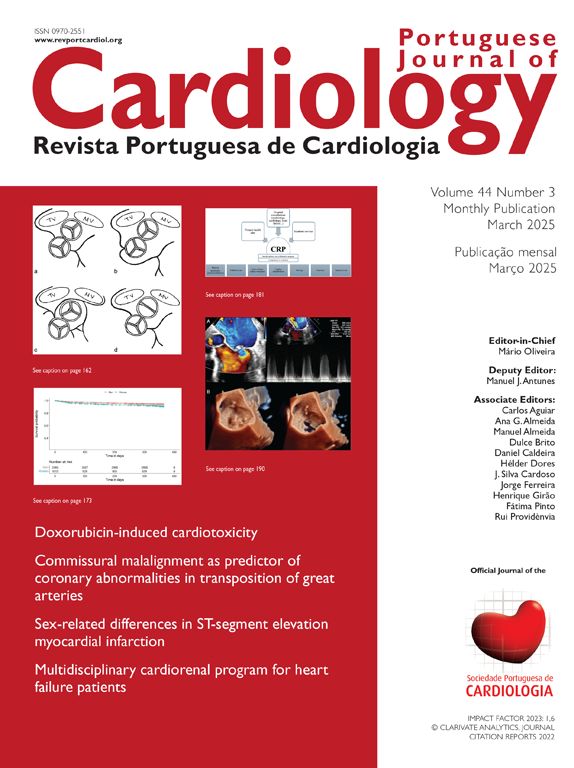Maximum oxygen uptake (VO2max) during the maximal cardiopulmonary exercise test (CPET) is the gold standard for aerobic fitness determination, however, CPET is underutilized.1 There have been several attempts to find an alternative, simple and accessible method to be used for accurate determination of aerobic fitness.
Some questionnaires have been proposed with reasonable results in specific populations, such as the Veterans Specific Activity Questionnaire (VSAQ),2 CLINIMEX Aerobic Fitness Questionnaire (C-AFQ),3 FitMáx questionnaire (FitMáx),4 Duke Activity Status Index (DASI)5 and Specific Activity Questionnaire (SAQ).6 Several limitations need to be highlighted in these questionnaires. Because of the heterogeneity of the population samples in the various studies (age, sex, educational level, geography, sample size, aerobic capacity, response rate, presence of cardiovascular (CV) disease and risk factors), the results obtained cannot be extrapolated to other populations without adequate validation.
The present study by Lima et al.7 “Validation of an Aerobic Fitness Questionnaire to estimate VO2peak in a cohort of adult cardiac patients – Is it enough?”, intends to validate the CLINIMEX Aerobic Fitness Questionnaire (C-AFQ),3 comprising a list of activities, in a Portuguese population sample of 124 CV patients (93% male, mean age 61 years old, 61% with heart failure), who were referred for CPET and cardiac rehabilitation. In this prospective study, which enrolled exclusively CV patients (mainly male), C-AFQ was not sufficiently accurate to predict functional capacity measured by VO2 peak. Despite a numerically strong and positive correlation between measured and estimated, by C-AFQ, VO2 peak (r=0.723, p<0.001), high levels of disagreement in the Bland–Altman plot analysis were observed.7
Of note, C-AFQ3 was determined in a large and varied Brazilian population sample of 686 individuals, almost 70% male, mean age 55 (14–96) years, 22% considered healthy, less than 50% with CV disease and others with hypertension, dyslipidemia and/or diabetes. This sample was comprised primarily of white subjects, high educational level and/or upper socioeconomical class, which is one of the reasons why the results obtained in this study3 cannot be generalized and this questionnaire cannot be applied to other populations without validation. A high correlation with CPET (r=0.91) was demonstrated, however an interview was used to complete the C-AFQ in the validation study, and this could have contributed to a high correlation, as was the case with the validation of the DASI.5
Prior to C-AFQ,3 VSAQ2 was developed to estimate the maximal metabolic equivalents (MET) value in 212 consecutive middle-aged and old male American veterans to estimate the cardiac respiratory fitness (CRF) expressed in VO2peak. Limitations were the length of time spent, the exclusion of women and many healthy exercisers and athletes (13 METS as upper limited score), and the low discrimination for those in the lower range of aerobic fitness (unique one-MET interval in scale). Also, a major drawback was the use of activities, such as basketball and skiing, which are not practiced globally. The capacity to perform daily activities such as walking and stair climbing are more generalized and directly related to CRF.
A simpler questionnaire is the FitMáx,4 consisting of three single-answer questions about the maximum capacity of life activities, walking, and cycling, all frequently performed by the general Dutch population, in which the questionnaire was administered. It included a total of 127 participants (84 men and 43 women), mean age 62 years old. One strength of this questionnaire is the use of three different activities in crescent intensity. The authors report that it is a valid and accessible questionnaire in clinical practice, better than other questionnaires, however, in many countries cycling is not a generalized activity, especially for old people. Subjects estimate their capacity in each activity separately, instead of using several activities together.
The DASI5 was developed to estimate aerobic capacity in CV patients and used to monitor rehabilitation progress. It is a 12-item questionnaire that assesses daily activities such as personal care, walking, household tasks, sexual function and recreation, with respective metabolic costs for each item.
Most questionnaires have not assessed women for criterion validity. The ability of a physical activity and functional capacity assessment questionnaire to predict functional capacity measured by treadmill exercise stress testing, as well as to correlate with CV risk factors and angiographic coronary artery disease (CAD) in women was evaluated8 in a National Heart, Lung and Blood Institute (NHLBI)-sponsored cross-sectional population study, “The Women's Ischemia Syndrome Evaluation (WISE)”, involving four academic medical centers.9 It enrolled 476 women with CV risk factors undergoing coronary angiography for evaluation for suspected myocardial ischemia. The main outcome measures were functional capacity measured during exercise treadmill testing, CV risk factors, and CAD, using core laboratory-determined measures. Physical activity measured by the Postmenopausal Estrogen and Progesterone Intervention physical activity questionnaire (PEPI-Q) and functional capacity measured by the DASI questionnaire, correlated with functional capacity measured in METS. It was concluded that the DASI questionnaire is a reasonable correlate of functional capacity achieved during symptom-limited treadmill exercise testing in women with suspected myocardial ischemia. The study suggested that the DASI and, to a lesser extent, the PEPI-Q have criterion validity for use in health-related research in women.8
Subjective self-assessment questionnaires may be useful, if they are simple, and are applicable across a range of conditions, easy to administrate, available in different languages, validated for different subpopulations and present in multiple administration formats (telephone or in person self-reported vs. proxy). However, we must be aware that some limitations exist, especially in populations like CV patients,10 and cannot be used indifferently in populations that have not been tested, without appropriate validation. One of the main groups that has been more difficult to evaluate by questionnaires is women.
The difference in results from the study by Lima7 and the previous study of Araujo3 is probably very much related to the fact that all participants were CV patients and not healthy people, and also, that the sample was not very large.
I would say that questionnaires are useful, when validated, to define or classify groups of subjects, rather than for individuals, and probably the relation of these with VO2 peak max obtained with CPET may be better in apparently healthy people than in CV patients. Questionnaires may be used for screening and research but, until now, not for individual accurate determination of aerobic fitness (at least for CV patients) in clinical practice. Models based on questionnaires, but which integrate other variables might be closer to VO2 peak estimation.
Cardiopulmonary exercise testing is still the main tool to determine aerobic functional capacity; it also provides several prognostic indicators for CV patients. CPET underutilization, mainly due to the equipment cost in comparison with standard exercise testing, to the lack of knowledge, training and experience, and the complexity of interpretation, needs to be strongly addressed through education and training of cardiologists and technicians and also through promotion of its unique clinical value.
Conflicts of interestThe author has no conflicts of interest to declare regarding this topic and this publication.



